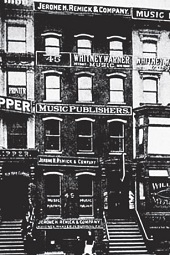Jewish Music in America
Do American Jewish audiences still want to hear live Jewish music? The answer appears to be a very qualified "yes" at least in the experience of one musical duo. About 17 years ago, I joined with Dr. Janis Fine, a professor colleague of mine to launch a side career as performance musicians in the Jewish world of Chicago. We were introduced by the Hillel Director of Loyola University as part of a social and educational program for Jewish academics in the Chicago area. In addition to academic events, we arranged an annual social program or 'beit café' (coffee house) for local professors and spouses. We worked up some Jewish songs and that evening our musical team was born.
Since that program in January 2000 we have performed well over 600 shows in Illinois and beyond. While maintaining our day jobs as tenured faculty at local universities, we met with an arranger who helped us develop an extensive repertoire which we have performed at festivals, private and public events, radio programs, and much more. Feel free to take a look at www.jeffandjanis.com to learn more about our amazing journey.
At first, as the musical duo "Jeff and Janis" (we are happily married to other people), we planned to entertain Jewish audiences at private celebrations and women's groups, Men's clubs, local Jewish events, and the like. Our initial repertoire leaned heavily on Jewish, Yiddish, and Israeli selections as we hoped to bring this music forward in a fresh, engaging and thoughtful manner—to provide audiences with opportunities to treasure and enjoy the music we had learned and loved over the years.
But we quickly discovered that most audiences, wanted more of the Great American Songbook, and fewer specifically Jewish selections. Demands for Yiddish songs were sparse and in decline. We learned that our audiences wanted less "Erev Shel Shoshanim" and more "Oh, What a Beautiful Morning". In response, we developed wonderful arrangements of Irving Berlin, Lerner and Lowe, Cole Porter, and others. We loved "doing Jewish" but we also wanted to stay busy and give audiences what they wanted. For audiences who were in their 60's or younger, we also worked up songs from the 60's and 70's.
Our repertoire needed to respect that our audiences had only a mild desire for Jewish/Israeli music and in many instances, they wanted just a few songs that were in Hebrew. We wondered why this was the case. It's hard to know for certain, but we have some theories. It's possible that American Jews have done little to replenish the wells of their Jewish music exposure and many people know only what was familiar from their childhood or music they heard decades ago at Jewish gatherings or synagogues. As the average Jewish American population ages, fewer are in settings where they hear new Jewish music and events which encourage communal singing that are so much a part of Israeli culture but are rare in the US. Those who attended Jewish summer camps participated in youth groups, attended day schools, or sang in Jewish choral groups are the exception rather than the rule.
In our experience, it is the 55+ crowd that seems to appreciate small-scale live performances for private or group entertainment, and they aren't typically looking to learn new Jewish music. Combine that with a preference to hear popular or nostalgic songs from the past and a dearth of people who appreciate Yiddish or Hebrew, it's a struggle to find audiences which embrace a concert with a robust Jewish song list.
We have found that audiences are quite interested in deepening their understanding of the substantial contributions Jewish songwriters have made to American popular music over the past century, and we explore those contributions through the lens of Jewish identity and cultural influences. This allow us to educate and entertain as we bring forward and highlight the fruits of so many talented Jewish musicians. We also explore the connection between the Jewish experience of American Jewish songwriters and the music they created. This theme resonates from Tin Pan Alley (see sidebar), stage and screen, folk, and contemporary times.
We treasure having the opportunity to transmit the musical dimension of our Jewish cultural heritage and remember fondly times when more American Jews shared common experiences and knowledge of Jewish, Yiddish, and Israeli songs. As musical tastes and offerings become more diverse and segmented in the larger world of popular music, a similar phenomenon seems to be occurring among American Jews as well. The times are "a changin" as one iconic Jewish songwriter put it 50 years ago, and musical tastes are changing as well.
This email address is being protected from spambots. You need JavaScript enabled to view it.
Tin Pan Alley is the name given to the collection of New York City music publishers and songwriters who dominated the popular music of the United States in the late 19th century and early 20th century. The name originally referred to a specific place: West 28th Street between Fifth and Sixth Avenues in Manhattan, and a plaque exists (see below) on the sidewalk on 28th Street between Broadway and Sixth commemorates it.
The start of Tin Pan Alley is usually dated to about 1885, when a number of music publishers set up shop in the same district of Manhattan. The end of Tin Pan Alley is less clear cut. Some date it to the start of the Great Depression in the 1930s when the phonograph, radio, and motion pictures supplanted sheet music as the driving force of American popular music, while others consider that Tin Pan Alley continued into the 1950s when earlier styles of American popular music were upstaged by the rise of rock & roll, which was centered on the Brill Building.









Comments